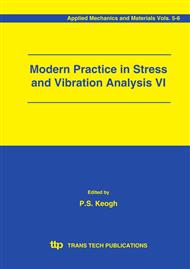p.367
p.375
p.383
p.391
p.399
p.407
p.417
p.425
p.433
Failure Characterisation of Heavy Tow Braided Composites Using Digital Image Correlation (DIC)
Abstract:
An extensive test campaign has been conducted to characterise the different failure modes observed in heavy tow (24k) carbon and glass braided composites. The Digital Image Correlation (DIC) technique was used to obtain complete strain field measurement of large strains to failure. Failure in the fibre direction, under tension and compression loading were investigated; in the tension direction relatively large strains to failure were measured due to tow straightening damage mechanisms. Another important test is tensile shear loading which can undergo very large strains to failure due to fibre re-orientations in the loading direction. This latter, so-called ‘scissoring’ mechanism, has been quantified through changes of fibre angle during the complete loading history. Data gathered from coupon testing was used to characterise a material damage, with failure, model for the heavy tow braids, using a general composite damage model available in the explicit Finite Element (FE) code PAM-CRASHTM. Finally, four-point bending tests on braided carbon and glass composite beams with full field strain measurements to failure was carried out and used to validate the numerical model. A good agreement between simulation and experimental results was obtained.
Info:
Periodical:
Pages:
399-406
Citation:
Online since:
October 2006
Authors:
Price:
Сopyright:
© 2006 Trans Tech Publications Ltd. All Rights Reserved
Share:
Citation:


